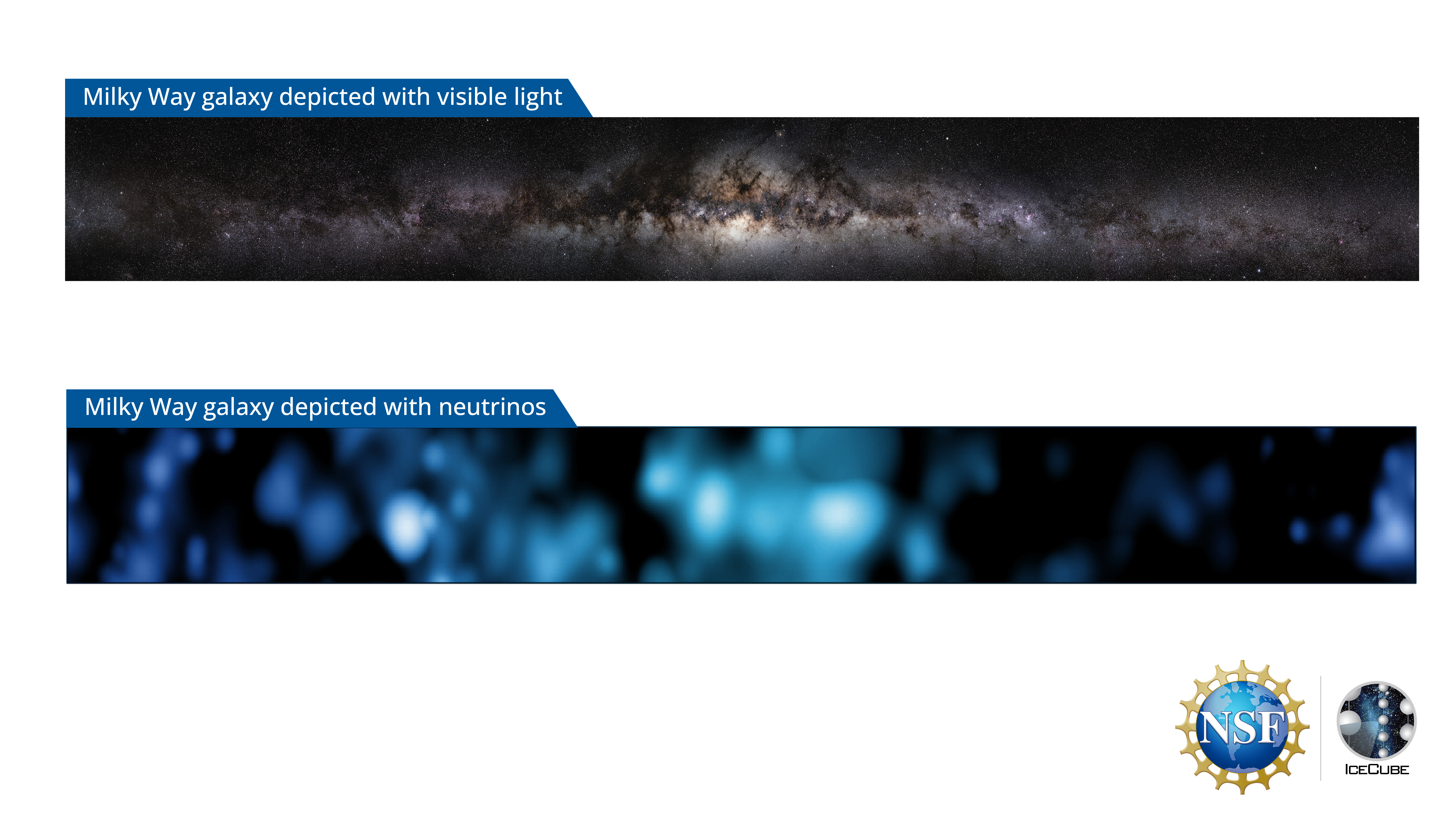Light, from gamma rays to radio waves, is how we study the universe – but there are other ways. Gravitational waves and neutrinos can also be used with increasing success despite major technical challenges. The latter are nicknamed “ghost particles”, and for good reason. There are 100 trillion of them passing through your body every second without interacting.
Most of those neutrinos come from the Sun, but so many astrophysical processes produce them. The IceCube Neutrino Observatory has in the past detected neutrinos from other galaxies. Now, scientists were able to produce the first map of the Milky Way based on its neutrinos emission.
“We have, for the first time, detected high energy neutrinos from the Milky Way. This allows us to learn more about our own galaxy, and is also a significant milestone for neutrino astronomy,” IceCube member Dr Erin O’Sullivan, Associate Professor in the Department of Physics and Astronomy at Uppsala University, told IFLScience.

Above, the Milky Way in visible light, and below, the first ever image of the Milky Way from its neutrinos.
Image Credit: IceCube Collaboration/U.S. National Science Foundation (Lily Le & Shawn Johnson)/ESO (S. Brunier)
So how does one hunt the most elusive known particle in the universe? With cleverness and a gigantic block of ice.
Neutrinos interact seldomly, but those interactions lead to a flash of light when they happen. So, the IceCube collaboration placed thousands of detectors within one cubic kilometer (0.24 cubic miles) of clear pristine ice within an Antarctic glacier to see the most energetic of these events.
When neutrinos interact with ice, they can leave directional trails that can be followed back to their source, like the one tracked back to Blazar TXS 0506+056. However, other signals in the detectors are more like fuzzy balls. Still high-energy neutrinos, but with less of a precise origin. Using machine learning algorithms to unravel the origin of over 60,000 neutrinos events, researchers were able to show that they come from different areas of the Milky Way.
“High energy neutrinos are produced in environments where particles are accelerated to extreme energies. Detecting high energy neutrinos from the Milky Way points to the fact that nature’s accelerators exist in our own galaxy,” Dr O’Sullivan told IFLScience. “Neutrinos can be used to view obscured and dusty environments that we cannot see using light, and so the fact that we can measure neutrinos from the Milky Way means that there is huge potential to learn more about our own galaxy in a complementary way to viewing it through traditional telescopes alone.”
The discovery of these neutrinos is not shocking. High-energy neutrinos and gamma-rays are produced in similar environments, such as the remnants of supernovae – what’s left behind from the explosion of massive stars. The distribution is consistent with where the galaxy’s cosmic rays are expected to interact. Still, more work is needed to understand where these energetic but intangible particles come from.
“The exact source of these neutrinos is still under study, but they are thought to be from old supernovae. Studying these neutrinos can tell us more about how supernova remnants behave and about how high energy particles interact in our galactic environment,” O’Sullivan explained.
The research is published in the journal Science.
Source Link: “Ghost Particle” Image Shows The Milky Way Like We've Never Seen Before